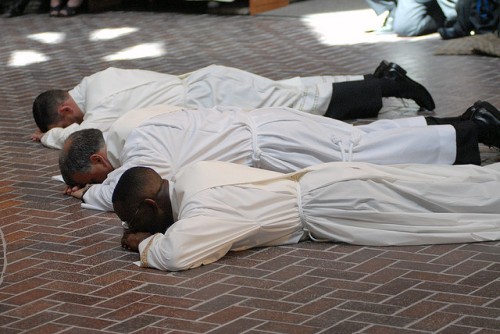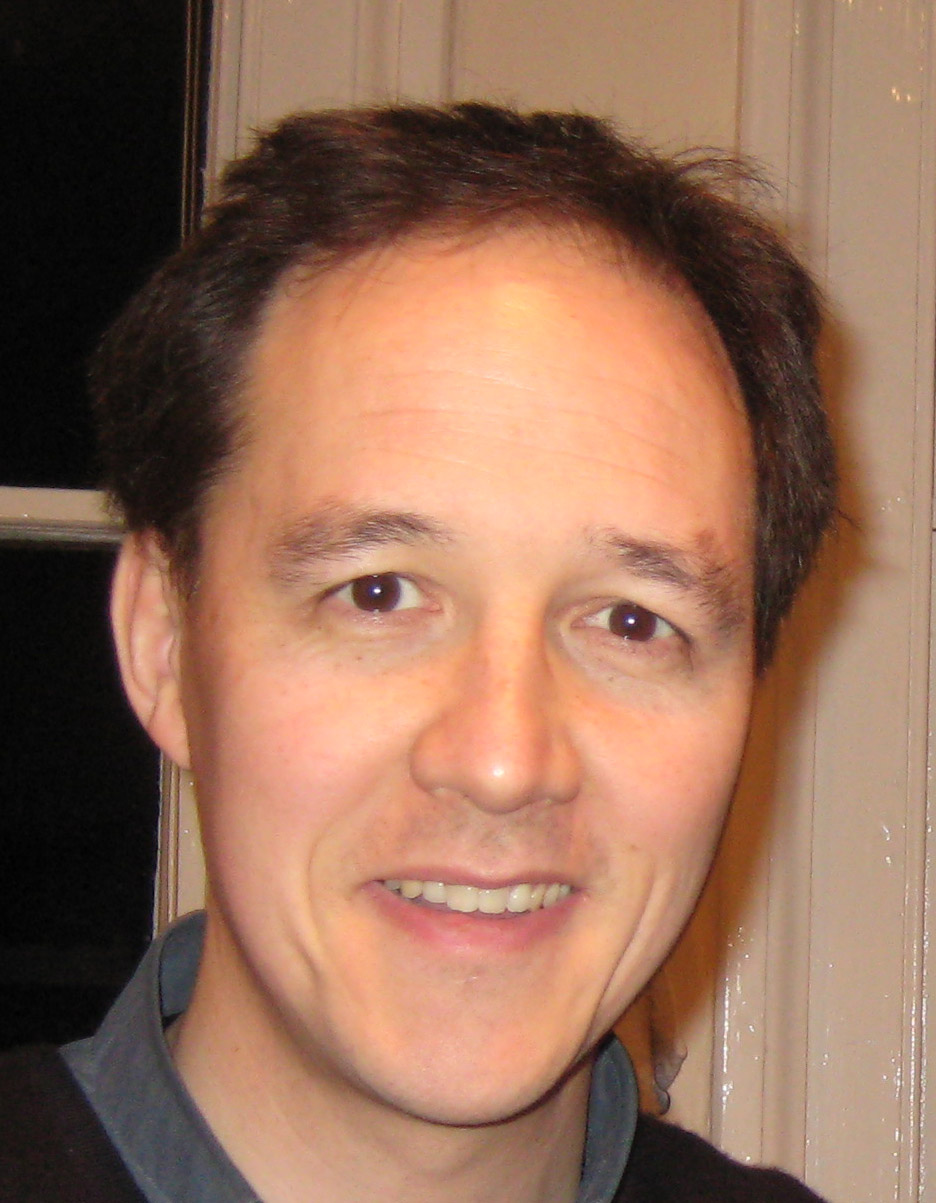Saturday was an extraordinary day. Eight deacons were ordained to the Sacred Priesthood in Westminster Cathedral: Oscar Ardila, Jeffrey Downie, Fortunato Pantisano, Giles Pinnock, Martin Plunkett, Jeffrey Steel, Martin Tate and Mark Walker. Seven are from Allen Hall Seminary in London, one is from the Beda in Rome; all are for the Diocese of Westminster.
Fr Mark Walker is from my home parish in Harpenden, and it was a particular joy to be back home on Sunday morning to join him at his first Mass in the parish church of Our Lady of Lourdes.
If you haven’t been to an ordination before, the text below gives you a flavour of some of the prayers and promises from the rite:
Homily
14. Then all sit, and the bishop addresses the people and the candidate on the duties of a priest. He may use these words:
This man, your relative and friend, is now to be raised to the order of priests. Consider carefully the position to which he is to be promoted in the Church.
It is true that God has made his entire people a royal priesthood in Christ. But our High Priest, Jesus Christ, also chose some of his followers to carry out publicly in the Church a priestly ministry in his name on behalf of mankind. He was sent by the Father, and he in turn sent the apostles into the world; through them and their successors, the bishops, he continues his work as Teacher, Priest, and Shepherd. Priests are co-workers of the order of bishops. They are joined to the bishops in the priestly office and are called to serve God’s people.
Our brother has seriously considered this step and is now to be ordained to priesthood in the presbyteral order. He is to serve Christ the Teacher, Priest, and Shepherd in his ministry which is to make his own body, the Church, grow into the people of God, a holy temple.
He is called to share in the priesthood of the bishops and to be molded into the likeness of Christ, the supreme and eternal Priest. By consecration he will be made a true priest of the New Testament, to preach the Gospel, sustain God’s people, and celebrate the liturgy, above all, the Lord’s sacrifice.
He then addresses the candidate:
My son, you are now to be advanced to the order of the presbyterate. You must apply your energies to the duty of teaching in the name of Christ, the chief Teacher. Share with all mankind the word of God you have received with joy. Meditate on the law of God, believe what you read, teach what you believer, and put into practice what you teach.
Let the doctrine you teach be true nourishment for the people of God. Let the example of your life attract the followers of Christ, so that by word and action you may build up the house which is God’s Church.
In the same way you must carry out your mission of sanctifying in the power of Christ. Your ministry will perfect the spiritual sacrifice of the faithful by uniting it with Christ’s sacrifice, the sacrifice which is offered sacramentally through your hands. Know what you are doing and imitate the mystery you celebrate. In the memorial of the Lord’s death and resurrection, make every effort to die to sin and to walk in the new life of Christ.
When you baptize, you will bring men and women into the people of God. In the sacrament of penance, you will forgive sins in the name of Christ and the Church. With holy oil you will relieve and console the sick. You will celebrate the liturgy and offer thanks and praise to God throughout the day, praying not only for the people of God but for the whole world. Remember that you are chosen from among God’s people and appointed to act for them in relation to God. Do your part in the work of Christ the Priest with genuine joy and love, and attend to the concerns of Christ before your own.
Finally, conscious of sharing in the work of Christ, the Head and Shepherd of the Church, and united with the bishop and subject to him, seek to bring the faithful together into a unified family and to lead them effectively, through Christ and in the Holy Spirit, to God the Father. Always remember the example of the Good Shepherd who came not to be served by to serve, and to seek out and rescue those who were lost.
Examination of the Candidate
15. The candidate then stands before the bishop who questions him:
My son, before you proceed to the order of the presbyterate, declare before the people your intention to undertake the priestly office.
Are you resolved, with the help of the Holy Spirit, to discharge without fail the office of priesthood in the presbyteral order as a conscientious fellow worker with the bishops in caring for the Lord’s flock?
The candidate answers: I am.
Bishop: Are you resolved to celebrate the mysteries of Christ faithfully and religiously as the Church has handed them down to us for the glory of God and the sanctification of Christ’s people?
Candidate: I am.
Bishop: Are you resolved to hold the mystery of the faith with a clear conscience as the Apostle urges, and to proclaim this faith in word and action as it is taught by the Gospel and the Church’s tradition?
Candidate: I am.
Bishop: Are you resolved to maintain and deepen a spirit of prayer appropriate to your way of life and, in keeping with what is required of you, to celebrate faithfully the liturgy of the hours for the Church and for the whole world?
Candidate: I am.
Bishop: Are you resolved to exercise the ministry of the word worthily and wisely, preaching the gospel and explaining the Catholic faith?
Candidate: I am.
Bishop: Are you resolved to consecrate your life to God for the salvation of his people, and to unite yourself more closely every day to Christ the High Priest, who offered himself for us to the Father as a perfect sacrifice?
Candidate: I am, with the help of God.
Promise of Obedience
16. Then the candidate goes to the bishop and, kneeling before him, places his joined hands between those of the bishop. If this gesture seems less suitable in some places, the conference of bishops may choose another gesture or sign.
If the bishop is the candidate’s own Ordinary, he asks: Do you promise respect and obedience to me and my successors?
Candidate: I do.
If the bishop is not the candidate’s own Ordinary, he asks: Do you promise respect and obedience to your Ordinary?
Candidate: I do.
Bishop: May God who has begun the good work in you bring it to fulfillment.

























